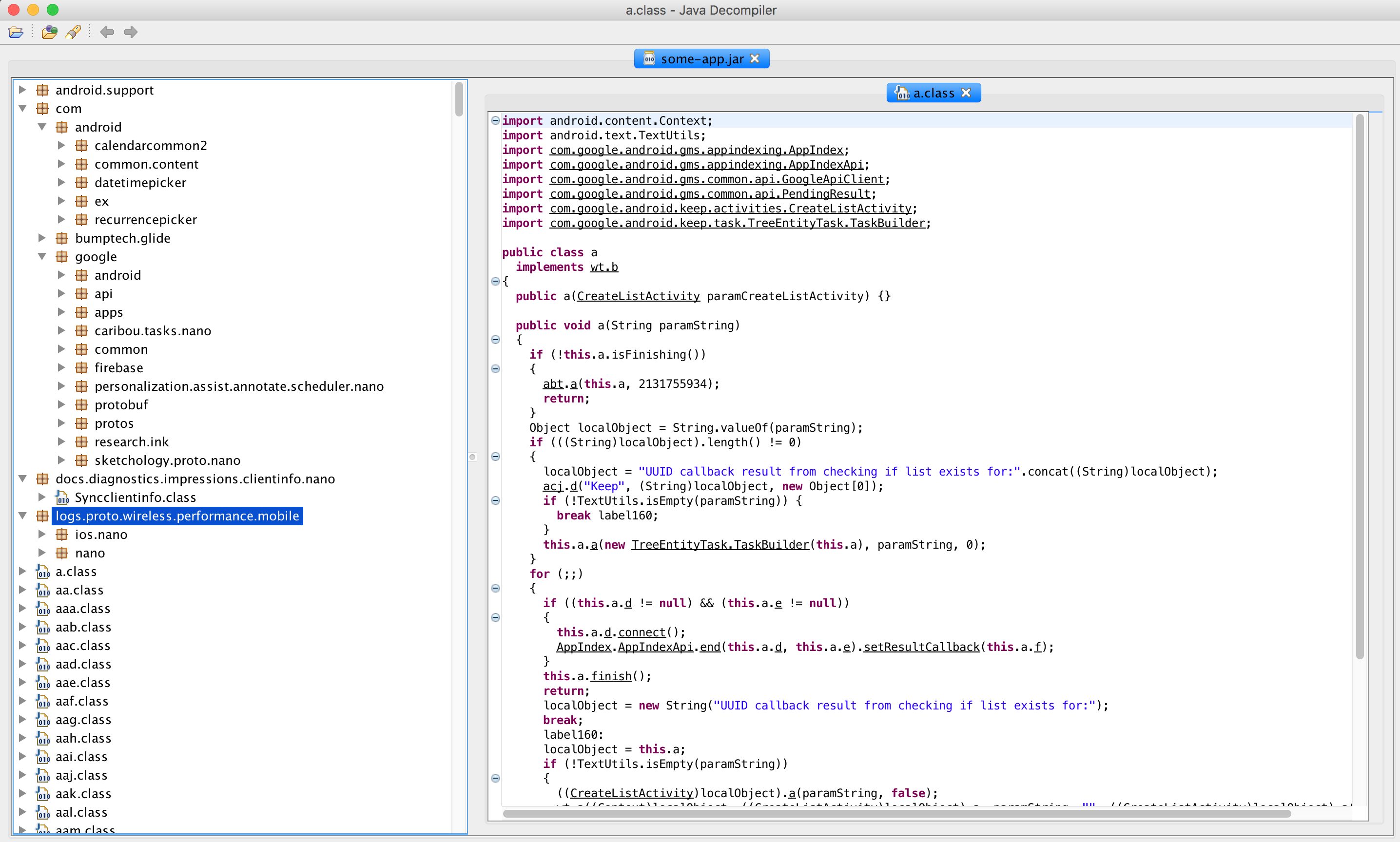As digital information becomes more valuable, companies are spending a lot of money to secure their data.
Protecting mobile applications becomes even more crucial since apps have been created to do almost every thing, from booking a cab to buying a house.
The goal of this article is to walk you through the very first step in the process of hacking a mobile application, understanding the internal structure of a mobile app by reverse engineering its apk.
Android application package
Before we can jump into reversing an apk, we should understand how an Android app is built and the anatomy of an Android app.
The process of generating an apk is pretty much straight forward, it can be sum up nicely in the following diagram:

Result of the above process is a zip file with .apk extension.
When you unzip it, you can find the following files and directories:
$ unzip some-app.apk -d some-dir/
$ ls -la some-dir/
total 20880
drwxr-xr-x 13 <username> staff 442B Apr 25 01:57 ./
drwxr-xr-x 48 <username> staff 1.6K Apr 25 01:57 ../
-rw-r--r-- 1 <username> staff 39K Jan 1 2009 AndroidManifest.xml
drwxr-xr-x 6 <username> staff 204B Apr 25 01:57 META-INF/
-rw-r--r-- 1 <username> staff 53B Jan 1 2009 android-support-multidex.version.txt
drwxr-xr-x 3 <username> staff 102B Apr 25 01:57 assets/
-rw-r--r-- 1 <username> staff 934B Jan 1 2009 build-data.properties
-rw-r--r-- 1 <username> staff 6.0M Jan 1 2009 classes.dex
drwxr-xr-x 3 <username> staff 102B Apr 25 01:57 com/
drwxr-xr-x 3 <username> staff 102B Apr 25 01:57 lib/
drwxr-xr-x 3 <username> staff 102B Apr 25 01:57 org/
drwxr-xr-x 51 <username> staff 1.7K Apr 25 01:57 res/
-rw-r--r-- 1 <username> staff 4.1M Jan 1 2009 resources.arsc| Directory | Content & Description |
|---|---|
AndroidManifest.xml |
a binary file describing the name, version, access rights, referenced libraries… it can be converted into readable plaintext XML with tools such as AXMLPrinter2, apktool, or androguard |
META-INF |
contains the manifest file MANIFEST.MF, the certificate of the application CERT.RSA, the list of resources hash CERT.SF
|
assets |
contains applications assets, which can be retrieved by AssetManager |
classes.dex |
compiled classes in the dex file format understandable by the Dalvik VM and Android RT
|
lib |
contains compiled native shared library for different CPU architecture: armeabi, armeabi-v7a, arm64-v8a, x86, x86_64, mips
|
res |
contains resources not compiled into resources.arsc
|
resources.arsc |
contains precompiled resources, such as binary XML for layouts, styles… |
Obtaining the target
There are a few ways to obtain the target application apk:
- Using Android Debug Bridge (a.k.a
adb):
$ adb shell pm list packages | grep "google"
$ adb pull /data/app/com.google.android.music-1/base.apk- Back up
apkto MicroSD card using one of the following applications: - Downloading from Google Play using a third party service:
Application general information
We can easily obtain general information after having the APK by using a tool called aapt which is bundled inside Android SDK
$ <android-sdk-path>/build-tools/<version>/aapt dump badging <sample.apk>Output will contain some helpful information like package name, version name, version code…
Reversing the target
Prerequisite
Configuration & resource files
First, we will use apktool to de-obfuscate the apk to obtain readable AndroidManifest.xml, assets and resource XML files.
It will also produce a list of machine readble smali files, together with original application certificate and resources hash (kept in original directory).
If the target application makes use of shared native libraries, there will be a folder called lib containing all *.so artifacts for different CPU architecture.
$ apktool d some-app.apk -o </some/output/dir>
I: Using Apktool 2.2.2 on some-app.apk
I: Loading resource table...
I: Decoding AndroidManifest.xml with resources...
I: Loading resource table from file: /Users/<username>/Library/apktool/framework/1.apk
I: Regular manifest package...
I: Decoding file-resources...
I: Decoding values */* XMLs...
I: Baksmaling classes.dex...
I: Copying assets and libs...
I: Copying unknown files...
I: Copying original files...
$ ls -la some-app
drwxr-xr-x 10 <username> staff 340B Apr 25 01:38 ./
drwxr-xr-x 47 <username> staff 1.6K Apr 25 01:38 ../
-rw-r--r-- 1 <username> staff 25K Apr 25 01:38 AndroidManifest.xml
-rw-r--r-- 1 <username> staff 739B Apr 25 01:38 apktool.yml
drwxr-xr-x 3 <username> staff 102B Apr 25 01:38 assets/
drwxr-xr-x 3 <username> staff 102B Apr 25 01:38 lib/
drwxr-xr-x 4 <username> staff 136B Apr 25 01:38 original/
drwxr-xr-x 200 <username> staff 6.6K Apr 25 01:38 res/
drwxr-xr-x 818 <username> staff 27K Apr 25 01:38 smali/
drwxr-xr-x 6 <username> staff 204B Apr 25 01:38 unknown/From here, we can pretty much know about the application layout structure, configuration for receivers as well as content provider if there is any.
Java source codes
To learn more about the application logic, we need to know the Java part of it. Hence, we use dex2jar to convert the previous obtained classes.dex file, which is in Dalvik bytecode format, to Java bytecode format.
If the application is a multidex application, we need to put together all classes.dex files for the decompiler in order to parse properly.
$ d2j-dex2jar -o some-app.jar classes.dex
dex2jar classes.dex -> some-app.jar
$ ls -la
-rw------- 1 <username> staff 6.7M Apr 25 02:07 some-app.jarUsing jd-gui or any Java decompiler tools, you then can view the readable Java source files.

![]() Cheers
Cheers ![]()